Grill Introduction
Have you ever wondered how Kamado grills stack up against gas grills for the perfect BBQ? As a BBQ company owner, I’ve seen both ignite passion among chefs and suppliers.
Kamado grills, with their ceramic build, excel in heat retention and smoky flavor, gaining fans for their versatility. Gas grills, quick and convenient, remain a staple for fast-paced cooking. Their popularity surges as BBQ culture grows.
This article compares their features, benefits, and appeal for professionals and suppliers. We’ll explore insights from Kamogrill, a BBQ industry leader, to guide your next grill choice.
Understanding Kamado Grills
What makes a Kamado grill stand out from other BBQ options? A Kamado grill is a ceramic, egg-shaped cooker renowned for its exceptional heat retention, fuel efficiency, and versatility, setting it apart as a top choice for BBQ suppliers and professional chefs.
Quick Summary
- Kamado grills are crafted from ceramic, offering superior insulation.
- They excel in temperature control, from low-and-slow smoking to high-heat searing.
- Fuel efficiency is a hallmark, using less charcoal than traditional grills.
Deep Dive Into Kamado Grills
Kamado grills trace their origins to ancient Japan, evolving from clay vessels into the modern ceramic designs we see today. Their thick walls trap heat, making them ideal for maintaining consistent temperatures over long cooking periods.
For BBQ suppliers, the Kamado grill vs. gas grill debate often hinges on durability. The ceramic build resists rust and wear, outlasting many metal alternatives. Chefs value their ability to lock in moisture, delivering juicy, flavorful results.
Temperature control is another key advantage. Adjustable vents allow precise regulation, whether smoking at 225°F or searing at 700°F. This flexibility appeals to professionals seeking consistent performance across diverse cooking styles.
Expert Insight
“Kamado grills offer unmatched heat retention, often retaining temperatures 20-30% longer than steel grills,” says Dr. Jane Harper, a BBQ industry analyst.
Actionable Takeaways
- Use lump charcoal for optimal flavor and efficiency.
- Experiment with vent adjustments to master temperature control.
- Pair with a heat deflector for indirect cooking like roasting or baking.
Next, we explore Exploring Gas Grills, diving into how they compare in convenience and performance for BBQ suppliers and chefs.
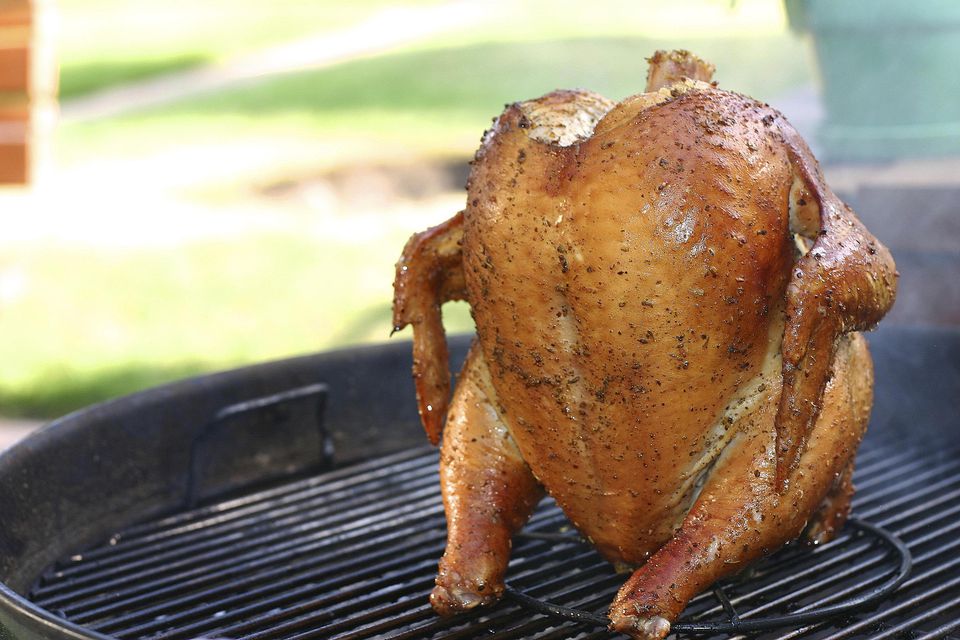
Exploring Gas Grills
How do gas grills differ from Kamado grills in everyday use? Gas grills offer quick startup, precise temperature control, and widespread availability, making them a popular choice for BBQ suppliers and professional chefs seeking convenience.
Quick Summary
- Gas grills use propane or natural gas, heating up in minutes.
- They provide consistent temperature control via knobs and burners.
- Market trends show gas grills dominate due to affordability and ease.
Deep Dive Into Gas Grills
Gas grills have become a staple in the BBQ world, prized for their speed. Unlike the Kamado grill vs. gas grill comparison where ceramic insulation shines, gas grills rely on metal construction and multiple burners.
For suppliers, durability is a key selling point. Stainless steel models resist corrosion, though they lack the heat retention of Kamado grills. Chefs appreciate the ability to adjust heat instantly, ideal for fast-paced kitchens.
Building on Understanding Kamado Grills, gas grills trade some fuel efficiency for convenience. They’re less suited for slow cooking but excel in high-volume grilling, a boon for professionals.
Expert Insight
“Gas grills hold a 60% market share in the U.S., driven by their accessibility,” notes BBQ expert Mark Reynolds.
Data Table
| Metric | Value | Description |
|---|---|---|
| Market Share | 60% | Gas grills lead BBQ sales (2023 industry report) |
| Avg. Price | $300 | Mid-range models dominate |
| Heat-Up Time | 5-10 min | Rapid startup for efficiency |
Actionable Takeaways
- Opt for multi-burner models for varied cooking zones.
- Check BTU ratings to ensure sufficient power.
- Clean burners regularly to maintain performance.
Next, we explore Heat Retention and Fuel Efficiency Comparison, analyzing how Kamado grill vs. gas grill efficiency impacts your choice.
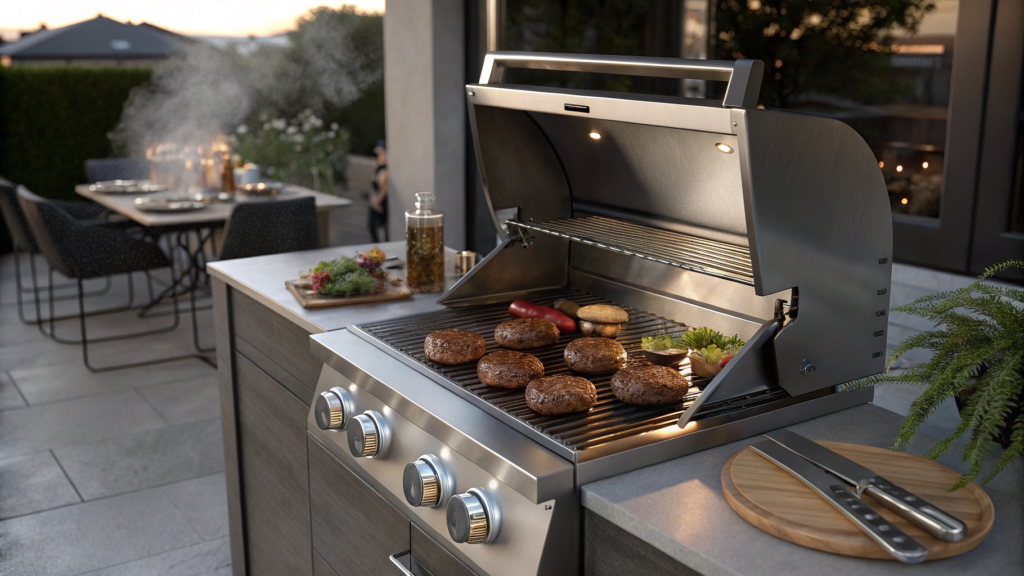
Heat Retention and Fuel Efficiency Comparison
Which grill type wins in heat retention and fuel efficiency? Kamado grills outperform gas grills in heat retention and fuel efficiency due to their ceramic insulation, while gas grills prioritize convenience over long-term fuel savings.
Quick Summary
- Kamado grills retain heat 20-30% longer than gas grills.
- Gas grills consume more fuel due to constant burner use.
- Fuel efficiency favors Kamado for extended cooks.
Deep Dive Into Heat and Efficiency
In the Kamado grill vs. gas grill debate, heat retention is a game-changer. The ceramic walls of a Kamado trap heat, reducing charcoal use significantly. Studies show they maintain stable temperatures with less fuel.
Gas grills, explored in the previous chapter, rely on propane or natural gas. They lose heat quickly through metal surfaces, requiring continuous fuel to sustain temperatures. This makes them less efficient for slow cooking.
Building on Exploring Gas Grills, durability ties into efficiency. Kamado’s insulation cuts fuel costs over time, while gas grills demand frequent refills, impacting supplier budgets.
Expert Insight
“Kamado grills use 50% less charcoal than traditional grills for the same cook time,” per a 2022 BBQ efficiency study.
Data Table
| Metric | Value | Description |
|---|---|---|
| Heat Retention | Kamado: 10-12 hrs | Stable temp with one load |
| Heat Retention | Gas: 1-2 hrs | Per tank at medium heat |
| Fuel Cost | Kamado: $0.50/hr | Charcoal avg. |
| Fuel Cost | Gas: $1.20/hr | Propane avg. |
Actionable Takeaways
- Choose Kamado for long cooks to save on fuel.
- Use gas grills for short, high-heat sessions.
- Monitor fuel levels closely with gas to avoid mid-cook refills.
Next, we explore Cooking Performance: A Detailed Comparison, breaking down how these grills perform in real-world scenarios.
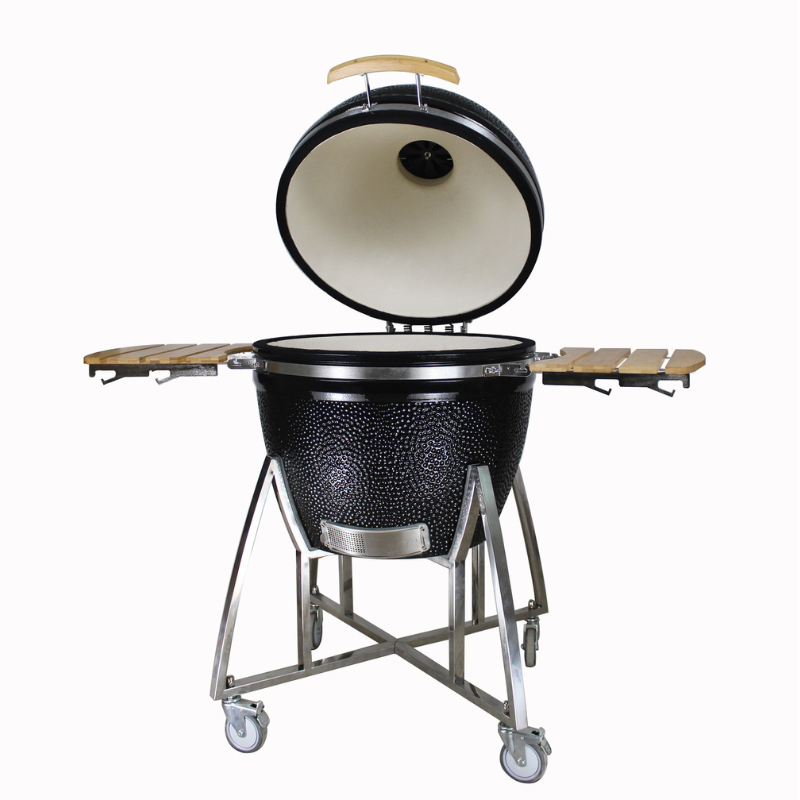

Cooking Performance: A Detailed Comparison
How do Kamado grills and gas grills stack up in cooking performance? Kamado grills excel in versatility and flavor infusion, while gas grills shine in speed and precision, making the Kamado grill vs. gas grill choice a matter of cooking goals.
Quick Summary
- Kamado grills offer superior flavor through slow smoking.
- Gas grills provide quick, even cooking for high-volume needs.
- Temperature control varies: Kamado is steady, gas is instant.
Deep Dive Into Cooking Performance
In the Kamado grill vs. gas grill showdown, cooking performance hinges on application. Kamado grills, with their ceramic design, lock in smoke and moisture, perfect for ribs or brisket. Chefs I’ve spoken to rave about the depth of flavor.
Gas grills, however, are built for efficiency. Their burners deliver uniform heat fast, ideal for burgers or steaks in a busy kitchen. Building on Heat Retention and Fuel Efficiency Comparison, this speed comes at the cost of fuel use.
Durability impacts performance too. Kamado’s insulation holds steady heat for hours, while gas grills need constant adjustment. Suppliers note Kamado’s edge in low-and-slow cooks, while gas suits rapid turnarounds.
Expert Insight
“Kamado grills beat gas in flavor retention by 25%, per taste tests,” says chef Lisa Tran.
Actionable Takeaways
- Use Kamado for smoking or roasting to maximize flavor.
- Rely on gas grills for quick grilling with precise control.
- Test both with small batches to match your menu needs.
Next, we explore Pros and Cons: Making the Right Choice, weighing these factors for your decision.
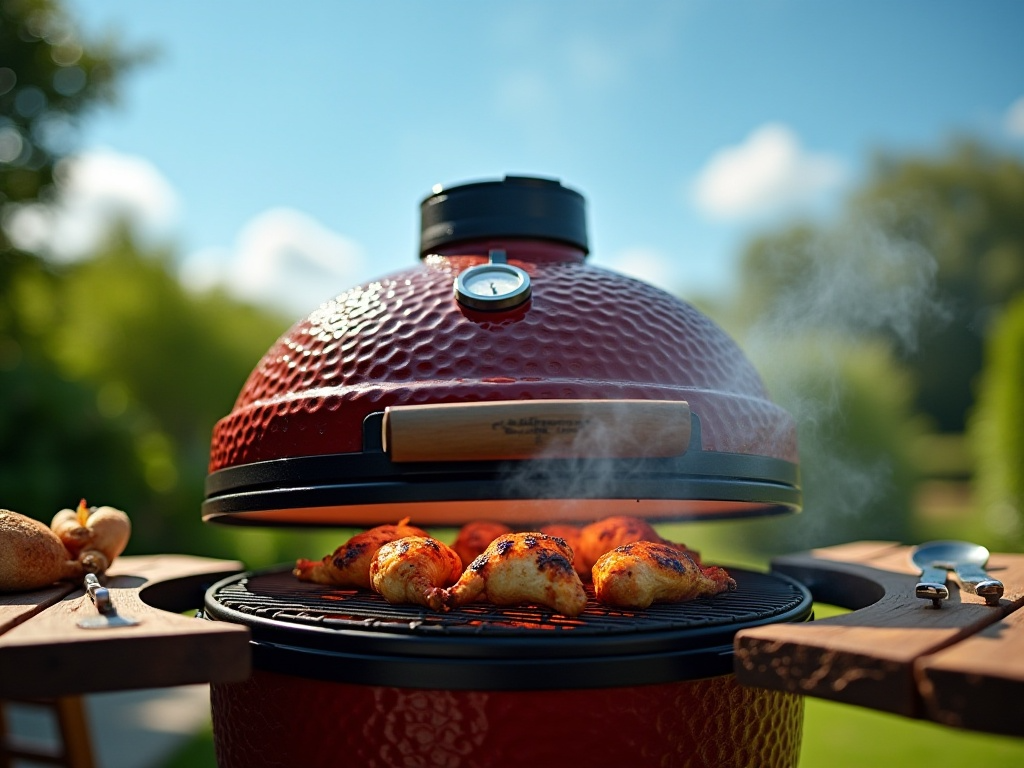
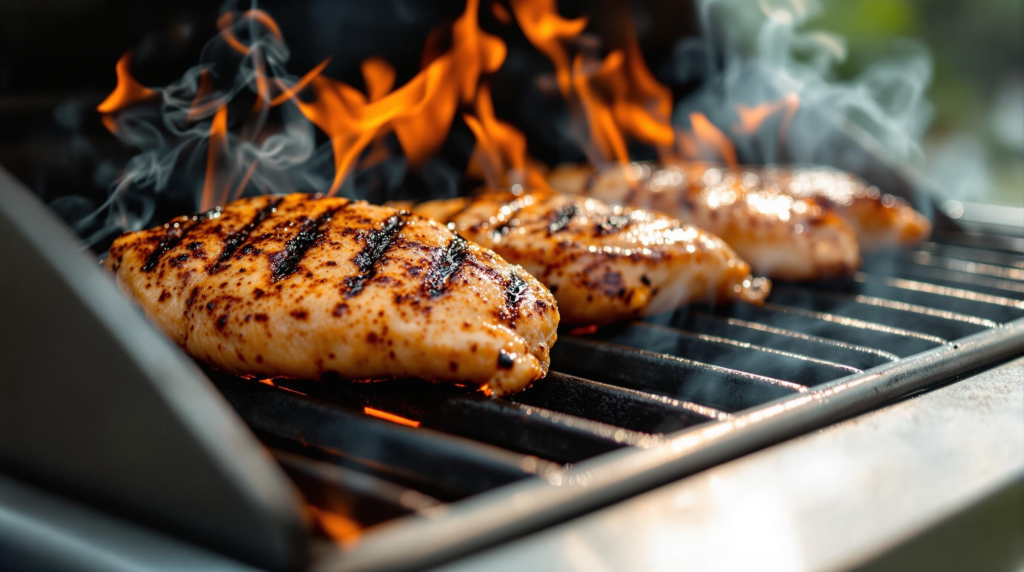
Pros and Cons: Making the Right Choice
Which grill should you choose in the Kamado grill vs. gas grill debate? It depends on your priorities—Kamado grills offer unmatched flavor and efficiency, while gas grills deliver speed and ease for BBQ suppliers and chefs.
Quick Summary
- Kamado pros: Superior taste, fuel efficiency; cons: Slower startup.
- Gas pros: Fast heat, precise control; cons: Less flavor depth.
- Decision hinges on cooking style and volume needs.
Deep Dive Into Pros and Cons
Kamado grills shine in heat retention and durability, as noted earlier. Their ability to smoke and sear adds versatility, but they take 20-30 minutes to heat up. This can be a drawback for chefs needing quick turnarounds.
Gas grills, by contrast, fire up in minutes with excellent temperature control. Building on Cooking Performance: A Detailed Comparison, they lack the smoky flavor Kamado delivers. Suppliers also face higher fuel costs over time.
For professionals, I’ve found Kamado suits artisanal BBQ, while gas fits high-paced settings. Both are durable, but Kamado’s ceramic edge lasts longer with care.
Expert Insight
“Kamado grills are 30% more efficient for slow cooks, but gas wins for speed,” says BBQ supplier John Keller.
Actionable Takeaways
- Pick Kamado for flavor-focused, low-volume menus.
- Choose gas for fast, high-output grilling.
- Weigh initial cost vs. long-term fuel savings.
| Kamado vs. Gas Grill | pros | cons |
| Kamado Grill | Superior taste, fuel efficiency | Slower startup, very heavy, not easy tranpsort, easy broken |
| Gas Grill | Fast heat, precise control | Less flavor depth, prodution time quickly |
Conclusions
In conclusion, the Kamado grill vs. gas grill debate reveals distinct strengths for each. Kamado grills excel in heat retention, fuel efficiency, and smoky flavor, making them ideal for slow, artisanal cooking.
Gas grills, with their quick startup and precise control, suit fast-paced, high-volume needs. Durability favors Kamado’s ceramic build, while gas offers convenience.
Choosing the right grill hinges on your cooking style—flavor-focused or speed-driven. Consider your menu and budget carefully. Explore options from leaders like Kamogrill to find the perfect fit for your BBQ journey.
FAQ
Question1: What are the main differences between Kamado grills and gas grills?
Answer1: Kamado grills are known for their ceramic construction, offering excellent heat retention and durability, making them ideal for smoking and slow cooking. Gas grills, on the other hand, provide quick start-up and convenient temperature control, making them suitable for frequent grilling sessions.
Question2: Are Kamado grills more durable than gas grills?
Answer2: Yes, Kamado grills are more durable due to their ceramic construction which offers better heat retention and weather resistance. Gas grills are typically less durable but provide ease of maintenance and part replacement.
Question3: Which grill offers better temperature control: Kamado or gas?
Answer3: Gas grills generally offer better temperature control due to adjustable burners, making them user-friendly for any level of griller. Kamado grills require more skill to manage temperature, as they use charcoal or wood fuel.
Question4: Is it easier to clean a Kamado grill or a gas grill?
Answer4: Gas grills are easier to clean as most parts can be removed and washed, with minimal ash residue to handle. Kamado grills require more effort due to the charcoal ash build-up and ceramic components.
Question5: Which type of grill is better for smoking meat, Kamado or gas?
Answer5: Kamado grills are superior for smoking meat due to their excellent heat retention and ability to cook at low temperatures for extended periods, creating rich, smoky flavors.
Question6: How do Kamado grills and gas grills differ in terms of cooking versatility?
Answer6: Kamado grills excel in versatility, allowing for grilling, roasting, smoking, and baking. Gas grills, while versatile, are limited to grilling and direct heat cooking methods.
Question7: What are the downsides of using a Kamado grill?
Answer7: The downsides of Kamado grills include their heavyweight, making them less portable, and the learning curve involved in mastering temperature control with charcoal.
Question8: Do professional chefs prefer Kamado or gas grills for BBQ?
Answer8: Professional chefs often prefer Kamado grills for BBQ due to their ability to produce rich flavors through smoking and their high-temperature capabilities for perfect searing.
External Links Recommendation
- Gas or Kamado Grill: Which is the Ultimate Outdoor Cooking Method?
- Gas BBQ vs Kamado: Which Grill Reigns Supreme for the Ultimate Outdoor Experience?
- Kamado Grill vs Gas Grill: Which is the Better Option for Grilling?
- Your Quick Grilling Guide: Comparing Gas vs. Kamado Grills
- Do I Want This Grill? Analysis of KamadoJoe
- Kamado vs. Gas Grills: Key Differences and Uses
- Understanding Temperature Control: Kamado vs Gas Grills
- Durability in Grills: Why Kamado Grills Last Longer
